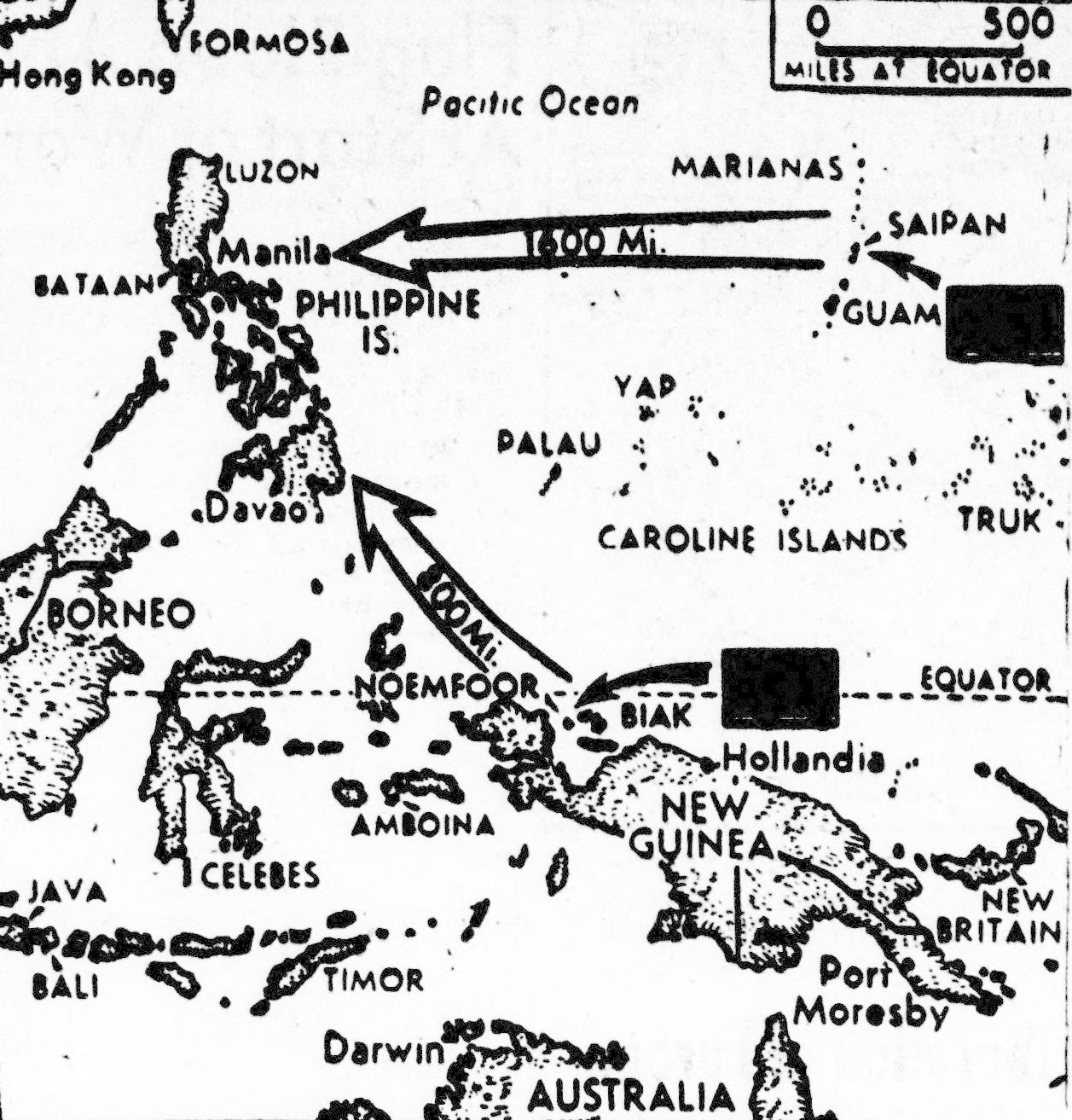The New York Times (June 28, 1944)
Japanese stiffen all across Saipan
Bypassed pockets in mountain caves harass U.S. soldiers and Marines
By Howard Handleman, International News Service
Aboard joint expeditionary force flagship, Saipan, Mariana Islands – (June 27)
Japanese infantry resistance stiffened all along the island-wide front this morning as Marine and Army forces reached a sector possibly chosen for the beginning of Japan’s last-ditch defense of Saipan.
Five heavily defended Japanese pockets have already been bypassed on Mount Tapochau, from whose peak the American line pivots to the beaches on the eastern and western sides of the island. The pocketed Japanese are defending caves from which they harass and slow the U.S. advance.
U.S. Marines and soldiers have destroyed 36 Japanese tanks and captured 40, the United Press said. Though the Japanese are employing mobile artillery and tanks in numbers never seen before in the Central Pacific, there has not yet been an actual tank battle.
The Japanese defense line bends from the north slopes of Tapochau down into Garapan on the west and through Donnay Village on the east shore. Snipers and machine-gunners hiding in Garapan houses and cellars fought patrols venturing beyond U.S. lines into the southern outskirts of the town.
The U.S. advance was spilling over lightly defended areas and slowing against the heavily resisting sectors to conform to enemy defense lines.
This line roughly cuts inland to the center, indicting a Japanese defense in depth and possibly presaging a battle phase even more bloody than that of the first two weeks of the Saipan invasion, during which the Japanese retreated, avoiding infantry clashes, but pounding the Americans with mortars and artillery.
Saipan, already ranking with the roughest Pacific battles, threatens to develop into a terrible campaign of bloodletting, with fighting in streets, houses, mountains, forests and cane fields, combining the worst terrain features of all the Pacific battlefronts. The Japanese still hold about half the island, giving both forces room for maneuvering, although U.S. Marines and soldiers hold every speed advantage because of superior mechanization. Their roadways are greatly improved over the Japanese-held roads.
The Americans continue to hold complete sea and air superiority. The enemy is still making light night raids.
Japanese ground opposition is a different thing. Mountain pockets are holding up the advance in spots that are almost impregnable. One was a blind ravine, a huge hole in the mountain, lined with caves, each of which carried a death threat for Marines probing cautiously over the ravine floor. Litter evidenced recent occupation of the ravine by the Japanese, who left clothing, rations, cigarettes and ammunition.
It was this kind of pockets behind and the mountain and mortar and small-arms fire ahead that slowed the progress. Pocketed caves had to be hit head-on by guns exposed to counterfire from the caves. Each pocket became a deadly small-scale battlefield for the men assigned to clean out the caves with small artillery and flamethrowers.
